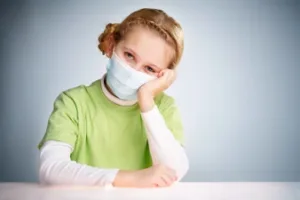In this final instalment in our series about technical hygiene in the Covidian Era, we provide some blunt musings about Covid-aware hygiene standards, especially national and industry-specific standards. Come along with us for an untamed ride of nuance and perspective through the wilderness of covidian concern.

Musing #1: Contextual versus national standards. An educator recently bemoaned the lack of national standards for cleaning shared equipment in schools. I suspect he felt that local educational practices were either insufficient, thinly followed, or poorly communicated. Thus he pined for more and stricter guidance from on high. I wonder if national or even state standards are in fact superior to industry-specific and location-contextualized standards. I am reminded by the complete lockdowns of hair salons in California, while here in Colorado, salons go on about their business in complete safety, following sensible safety standards—with no resultant infections. Can bureaucrats, sitting at a distance, really make the kinds of safety decisions that best fit a local community? I think not. The CDC recently posted the study results of a potential Covid spread in a Springfield, Missouri hair salon. Two stylists, who subsequently serviced more than 139 patrons, were initially infected. After testing these paying customers, the CDC found “all test results were negative”. Their conclusion? “Adherence to the community’s and company’s face-covering policy likely mitigated spread of SARS-CoV-2”. See the study summary for yourself. The bottom line is that I am suspicious of state or national standards over the local or industry-specific standards. Looking at the California example, it is all-too-easy to overthink the situation and punitively disconnect safety standards from actual science.
 Musing #2: AMC standards. The most comprehensive set of hygiene standards in the theater industry are those of the AMC theater chain. Here is a list of their official covid-era hygiene steps, which is impressive to say the least:
Musing #2: AMC standards. The most comprehensive set of hygiene standards in the theater industry are those of the AMC theater chain. Here is a list of their official covid-era hygiene steps, which is impressive to say the least:
- physical distancing in seating
- masks required
- reduced auditorium capacities
- cashless transactions
- hand sanitizer and disinfecting wipes
- simplified menus Refills and condiments by request only
- daily associate health screenings
- frequent hand washing encouraged
- self-check reminders (don’t come if sick)
- enhanced cleaning procedures, advised by Clorox
- electrostatic disinfectant sprayers
- upgraded NMERV 13 Air filters
- HEPA filter vacuums
Apparently, AMC is serious about getting their customers back. I have seen numerous movies, in theater, since the pandemic started, and these improvements are clearly visible to the customer.
Musing #3: The AOA weighs in. Hygiene standards for VR headgear (and previously, 3D glasses) in schools have been top of mind for the doctors and scientists of the American Optometric Association (AOA), long before the current Covid crisis ever erupted. Although there have been no reported instances of problems and no published studies, the American Optometric Association informs us that the eye can be an important route of microbial exposure. Their recommendations, which can be viewed as hygiene standards, are summarized here: “Teachers and children should be instructed to ask about the cleanliness of headgear; hand washing before use would be helpful; cleaning the VR headgear with cold disinfecting systems between uses or employ existing UV cabinets (found in many science classrooms) will provide additional disinfecting and anti-microbial protection between uses.”
Musing #4: What’s missing. Isn’t there more to safety than merely disinfecting any shared equipment? In the Hologate VR standards for location-based entertainment (see my third article in this series), what’s missing is physical distancing of customers, masking, temperature taking, reduced facility capacity, staff testing and hand washing, air and HEPA filters, and ‘enhanced’ facility disinfecting, and other ‘enhanced’ disinfecting procedures. Does this then make the opposite case for promoting national standards over industry-preferred hygiene standards?
Musing #5: Aiming for the middle. In the heat of our current pandemic scramble, a clear continuum exists: the “covidiot to covidian” spectrum. At one extreme lies the covidiot. The covidiot is not afraid of contracting Covid-19 for any number of reasons. For example, s/he sees himself/herself as invincible or as the victim of a government ruse. Whatever the reason, life must go on.
The covidian, to the contrary, sees the possibility of contamination around every corner and is driven by miserable fear. You can identify a covidiot because she will enter a busy store without a mask; you can distinguish a covidian because he will be driving a car all alone, wearing a mask. I find myself somewhere in the middle of this spectrum, guided by science, data, and keen self-awareness.
So here’s the rub: technical hygiene standards are really aimed at the large crowd in the middle. Most covidiots will ignore, fake or delay adhering to hygiene standards unless forced to do so; covidians will see such standards as “not enough” and are likely to “just stay home”. Now let’s apply this spectrum in real life.
Take for example the AMC theater hygiene standards, which are fairly comprehensive, in my way of thinking. I have seen covidiots take their masks off after the theater goes dark, even though our state requires masking indoors. Conversely, I have numerous covidian relatives who would never go to a theater, no matter what safety standards are in place. So, safety standards really benefit the sensible middle, not the extremes. They are aimed at the thinker, the analyzer, the realist, and the rationalist. In the main, businesses are hoping that catering to the middle can carry them through our unfortunate economic hard times. – Len Scrogan

